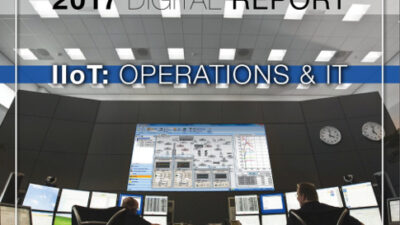Boston, MA—Global manufacturing execution system (MES) market revenue reached an estimated $1.06 billion in 2004, which represented a 50% increase since 2001, according to a new report by AMR Research.
Boston, MA— Global manufacturing execution system (MES) market revenue reached an estimated $1.06 billion in 2004, which represented a 50% increase since 2001, according to a new report by AMR Research. The study, “MES Market Rides Perfect Storm Through $1B Barrier,” found that compliance initiatives and ERP maturity are the two major drivers that reportedly combined to create a perfect environment for MES market expansion.
‘In 2001, the vast majority of the Fortune 1000 manufacturers that AMR Research surveyed were in the throes of massive ERP rollouts,’ says Alison Smith, AMR’s senior research analyst. ‘As these draw to a close, manufacturers are realizing that their ability to effectively measure and manage the performance of their manufacturing assets hasn’t proportionately improved.’ AMR’s report identifies three main reasons for this imbalance:
Focus on application rationalization. In the rush to rationalize ERP systems to support standardizing business initiatives during the dot-com era, manufacturing, inventory management, and plant scheduling played second fiddle.
Lack of a real-time enterprise. ERP systems require production actuals to deliver the next level of benefit to an organization. In the absence of real-time manufacturing data, ERP will continue to drive business on a set of erroneous data.
Myth of lower total cost of ownership (TCO). While lower TCO and the prospect of maintaining a single, omnipotent application were seductive selling points at the corporate level, reality is settling in at the plant level. If ERP has to be heavily customized to support manufacturing, as is often the case, lower TCO goes out the window.
Since 2001, an increasing number of companies have begun to use MES to make the connection between enterprise systems and manufacturing. Industry specific examples of this include:
The A&D market for MES grew from an estimated $23 million in 2001 to $57 million in 2004, which was an increase of nearly 150%.
MES revenue from sales into the food, beverage, and consumer products segment more than doubled from $30 million in 2001 to $61 million in 2004. This increase is caused by the need to rapidly and consistently manage production across a high mix of brands and globally distributed manufacturing facilities.
Quality control and warranty cost recovery initiatives in the automotive industry caused MES revenue from sales into this segment to hit $52 million in 2004, up from $21 million in 2001.
The computer, electronics, and semiconductor market grew 39%, from $201 million in 2001 to $280 million in 2004. AMR adds its research found that, despite consolidation in the last five years, the MES market continues to support a myriad of vendors, and that no single vendor dominates the market.
AMR predicts large automation vendors such as GE Fanuc, Invensys, Rockwell, and Siemens will increase their footprints in specific vertical segments.
Automation and ‘pure-play’ vendors saw the largest growth over the past three years. Automation vendor revenue grew by 75% to $208 million from 2001 to 2004, while pure-play vendors grew 114% to $140 million during the same period.
Control Engineering Daily News DeskJim Montague, news [email protected]


